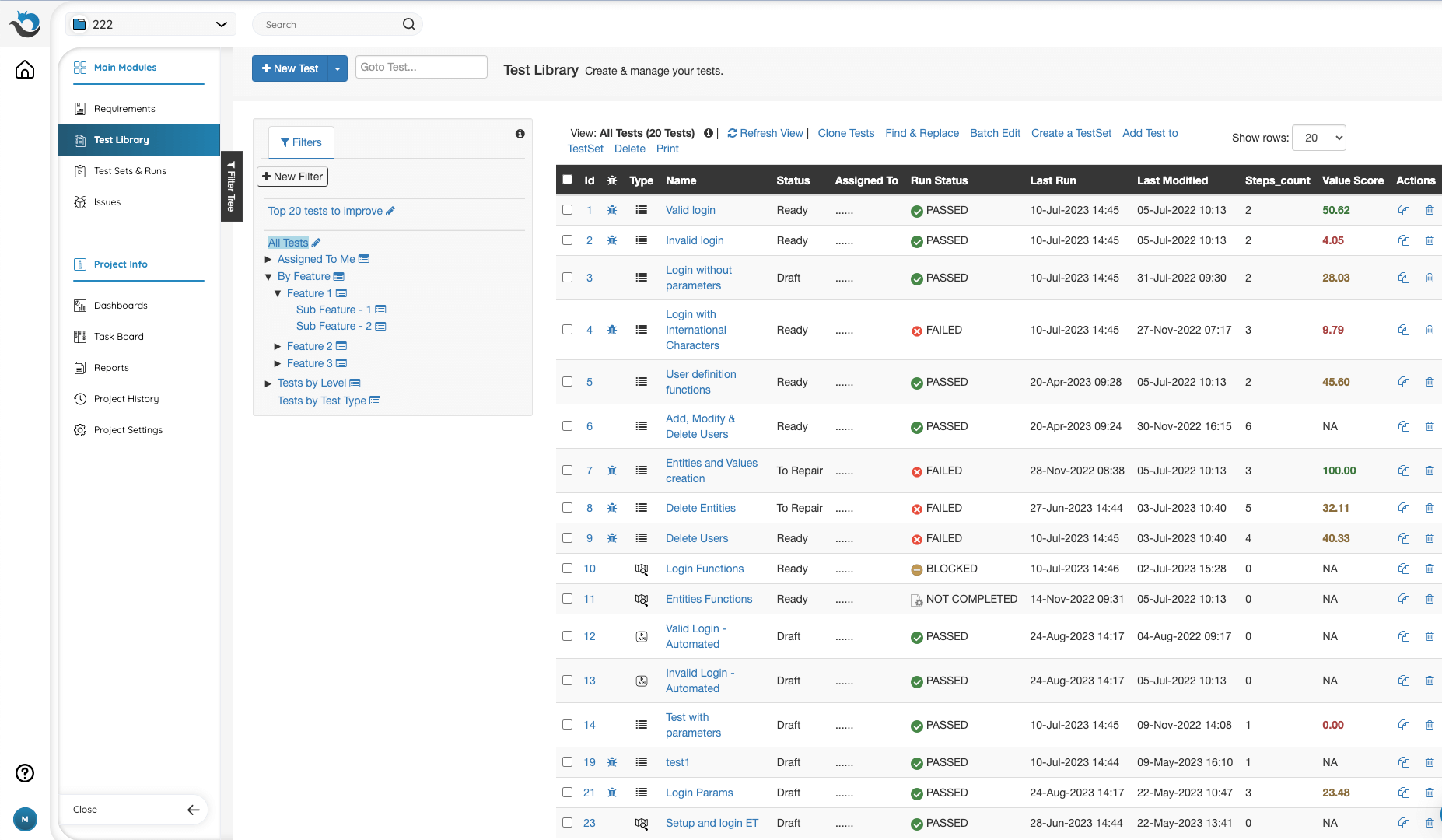When Should You Stop Testing? Exit Criteria in Software Testing
In This article
Quality stands as the biggest priority in the realm of software development. Software testing acts as the guardian of this quality, delivering functional products that satisfy user expectations. However, determining the appropriate time to stop testing can be challenging.
The modern business domain is highly influenced by time. When every tick of the clock matters, we need beacons to guide us through the testing process and help us understand when we should stop testing and start delivering. This is where exit criteria come into play. In this article, we will identify exit criteria in software testing, explore their significance, untangle their complexities, and uncover what should be considered before stopping testing.

What Are Exit Criteria?
Exit criteria in software testing refer to the predefined conditions or requirements that must be met in order to conclude testing and begin delivering. In the past, when testing was a separate stage from the application lifecycle management, the exit criteria were the signs which indicated the end of the testing phase and the start of the next stage.
However, in modern software development approaches, testing is conducted in parallel to development. The exit criteria are checkpoints that tell you when you’re on the right path, when you’re approaching your testing goals, and when you should start delivering.
The Importance of Exit Criteria
One of the main purposes of exit criteria is to prevent over-testing. Without a clear endpoint, testing efforts can become never-ending, resulting in excessive time, resource consumption, and project delays.
Over-testing won’t guarantee a flawless product, but may cause a loss of focus when trying to reach unattainable levels of software perfection. As new features come in and requirements evolve, the finish line keeps shifting. By setting clear boundaries, exit criteria stop you from endlessly chasing harmless bugs that might not significantly affect users and are not worth your time.
Challenges in Determining Exit Criteria
Trying to determine the exit criteria is not an easy task to do. Development projects vary from each other and have different targets, requirements, and users, which can impact defining those criteria. Here are some main challenges QA teams are facing:
-
Evolving Requirements: As the software life cycle progresses, we will likely see changes in the requirements from what was initially defined. Even after software release, during ongoing maintenance, more features, fixes, and updates will be deployed according to customer needs. Managers and teams need to keep their minds flexible and adjust their exit criteria based on the changes that occur alongside the project.
-
Management Priorities: Managing shifting priorities and changes in stakeholder expectations is a challenge. As end-user requirements evolve, the business requirements of stakeholders may also cause them to alter their priorities. For example, a company’s upper management can decide to shorten the time frame to release a new feature, impacting the QA team’s exit criteria as they are required to release as fast as possible.
-
Resource Limitations: Resource limitations pose another challenge when determining exit criteria. Testing resources, including time, budget, and personnel are often limited. It’s essential to strike a balance between thorough testing and the available resources to ensure the testing phase remains manageable and efficient.
The Connection Between Testing and Risk Management
Software testing is tightly bound with risk management within development projects. The whole purpose of software testing is to minimize the likelihood of defects, failures, or vulnerabilities that may harm the end-user experience or the business itself. The risks associated with software could relate to functionality, performance, and security vulnerabilities. By performing comprehensive risk assessment, QA teams can focus on which areas to test.
Not all aspects of a software product carry the same level of risk, and testing efforts should focus on areas that are likely to pose higher risk. This can include areas where bugs have been frequently encountered in previous sprints, which may indicate a pattern. Likewise, features that have undergone recent modifications or updates may cause bugs or vulnerabilities in other areas, which is known as regression.
Let’s be clear, there is no software that is 100% bug-free. Some bugs are simply low in severity and don’t have an impact on functionality or user experience. Given the fact that time is typically short on schedule, risk assessment should be prioritized. Software testers, developers, and managers should determine when the software or a particular feature is good enough to be considered acceptable for release.
What to Consider When Defining Exit Criteria for Software Testing
Each software development project has its own goals, hence the exit criteria can be different. It isn’t about “done testing” as it’s more focused on ensuring that the right areas are covered and that you lower the risks with efficient testing efforts.
Here are some of the most common points to consider before stopping to test.
Time Constraints
Time constraints play a pivotal role in software development projects as real-world projects often have tight deadlines. Projects operate within specific timelines, and there may be external pressures to release the software both internally to stakeholders and externally to end-users. A balance must be struck between the desire for extensive testing and the need to expedite releases to help ensure that exit criteria are pragmatic and achievable.
In order to effectively address this, it’s recommended to prioritize testing based on risk assessment. Focus on testing the most critical aspects of the software to ensure stability and reliability. Keep communication channels with stakeholders and your team open to better understand the expected timeframe, what they should focus on, and whether potential delays are on the horizon.
*Tip: Automation testing could be a great way to speed things up and accelerate your testing efforts. This tool allows you to complete complex testing activities in a shorter time than manual testing and deliver highly reliable results.
Requirements and Test Coverage
Effective testing aims to verify that the software meets the specified requirements. Comprehensive requirement coverage ensures that all functional and non-functional aspects of the software have been tested. If you have performed comprehensive testing that covered all of the requirements of your software, then it might be a good sign to stop testing. But to ensure that, you also have to measure your test coverage.
As your testing efforts are based on requirements and areas of risk, you have to closely measure both of these areas to gain a clear picture. In parallel to requirements, revisit your test plan to see if there are any more test cases you have designed and have yet to be executed. A centralized test management platform can help you better monitor your requirements and test case execution progress, as each QA aspect is managed under one dedicated, centralized hub.

Severe Bugs Eliminated
As mentioned above, it’s unrealistic to expect a software application to be completely bug-free. Instead, focus on identifying and addressing severe, high-impact defects which can significantly impact both software functionality and user experience. In a competitive market, there are plenty of alternative solutions. Customers won’t hesitate to switch to a competitor after a negative user experience.
Defining exit criteria for the resolution of severe bugs can prioritize critical issues while acknowledging that minor defects may still persist. This strategy is coherent with risk-based testing principles that prioritize the minimization of the most harmful issues. Teams must establish criteria that ensure severe bugs are rectified to an acceptable extent before the software is deemed fit for release.
Key Takeaways
Defining exit criteria for software testing is essential for successful project completion. Software testing exit criteria act as a road sign that tells us when it’s time to stop testing the software, as it may be ineffective. Identifying when to stop testing will help you verify your software is good to go while meeting scheduled deadlines.
By prioritizing areas that are likely to be at high risk for bugs, and considering factors such as time constraints, requirement coverage, test coverage, and the resolution of severe bugs, organizations can set clear guidelines for determining when testing has produced good results and the software is ready for release.
Using a test management platform such as PractiTest can help you improve the management and tracking of your testing activities, including requirements, defects, and test cases. With extensive reporting features and real-time dashboards, PractiTest helps QA teams clearly understand where they stand and whether their testing process achieved project objectives.























